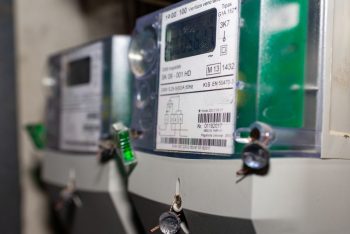Case study on final electricity consumption for space heating in French private households and the danger of data misinterpretation
Context
In the face of advancing global warming, citizens as well as politicians join forces to oppose climate change, as reflected in actions such as the European Green Deal. The research project eXtremOS recognises the need for a European scope in the context of energy system simulations and investigates the effects of extreme technological, regulatory and social developments on the value of flexibility in the European electricity market.
A major part of the research regarding the current energy system is the consumption of electricity, as it plays an important role in terms of energy usage and consumption today and will become ever more important in the near future. It is expected that electrification will widely contribute to a decarbonised energy provision, where renewable energies pave the way for low-emission electricity. To illustrate the status quo as well as the future potential of electrification, FfE created European electrification profiles for 16 European countries, which are presented here.
As the energy systems of 16 European countries are analysed, European data such as the Eurostat Energy balance is used to capture the current status of final energy consumption [1]. To verify the data, national energy statistics and various country specific literature is compared with the European data. As discussed in a FfE article in [2], statistical data from different statistical sources can deviate quite substantially.
To show differences, similarities and unexpected results between the data used in eXtremos and national data, the presented case study investigates the example of electricity consumption of private households in France. This particular focus is chosen because of the available data, which at first glance appears contradictory. More specifically, we discuss why the fact that 39 % of French homes are at least partly heated with electricity [3] does not contradict the finding that electricity only accounts for 12 % of the final energy consumption in space heating [1]. Hence, the following analysis demonstrates how to manage such data and how to cope with the danger of data misinterpretation.
Case Study
France displays an example of the investigated countries in eXtremOS. The country’s total electricity consumption lies within the expected scope of an industrial country of such size. When going into more detail and focusing on the residential sector, however, it becomes evident that the final electricity consumption in French households is relatively high. With a total of 160 TWh, the electricity consumption accounts for 34 % of the total final energy consumption in the residential sector in 2017 (see figure 1). In comparison, in Germany the share of electricity in final energy consumption in the residential sector is 19 % for 2017 (125 TWh in absolute numbers).
One reason for the high ratio of electricity consumption in the residential sector of France is a combination of a high number of electrical storage heaters and a substantial amount of heat pumps installed in French households. As both storage heaters and heat pumps are employed for space heating, it is not surprising that electricity accounts for 12 % of France’s final energy consumption for space heating of residential buildings, which translates to 23 % of the electricity consumption in the residential sector. As displayed in figure 1, in Germany electricity accounts for merely 2 % of final energy consumption for space heating, even though the total share of final energy consumption for space heating in households is nearly identical for both countries.

To verify the data concerning the share of electricity as well as the share of electricity used for space heating in French private households, the values calculated in eXtremOS (based on Eurostat data) are compared with national statistical data stated in the generation adequacy report of the French transmission system operator RTE (Réseau de Transport d’Électricité/ Electricity Transmission Network) [3]. Figure 2 represents the result of this comparison. With a discrepancy of 3 %, the accounts of total electricity consumption in French households are almost identical for both sources of data.
For different areas of usage, the shares of electricity consumption vary between the two sets of data, where deviations range from 0 % to 5 % excluding other areas of usage. This deviation is most likely caused by slightly different balancing methods and unequal definitions of areas of usage. In the FfE split based on Eurostat data, for instance, no group of “other areas of usage” is defined. It can therefore be concluded that both the European data, on which the eXtremOS approach is based, and the national data from RTE are sufficiently similar such that absolute values and the split by area of application can be legitimately used for simulations in the research project.

The determined share of final electricity consumption for space heating in private households can be used, for example, to investigate the heating energy generated via electrically driven heating systems for space heating by employing a short and simplified calculation. Assuming that electricity consumption for space heating either results from heat pumps or from a heating system that directly converts electricity to heat, the equation on the left side of figure 3 is derived. Further assuming an average coefficient of performance (COP) in the range of 2 to 3 for heat pumps and a conversion efficiency of 98 % to 99 % for direct electric heating, the heating energy can be can be calculated if the share of final electricity consumption by heat pumps is known.
For the project eXtremos, FfE calculated the electricity consumption of heat pumps and published the results in this article, where heat pumps in France consume 12.9 TWh of electricity for space heating in the residential sector. The right of figure 3 displays the results of the calculations based on the values used for eXtremOS. A total heat generation by electrically driven heating systems of 49 to 62 TWh is determined, where heat pumps produce 53 % to 62 % of this heating energy (25.7 TWh to 38.6 TWh).

A final step of the investigation concerns the actual usage of heat pumps and electric storage heaters in France’s residential sector in contrast to the amount of electrically driven heating systems installed. The RTE report claims that in 2015 in France “39 % of homes are heated with electricity (including dual fuel) though there is a disparity between single-family homes (44% have electric heating installed) and flats (33%)” [3]. Yet, comparing these shares of installed systems with the determined final electricity consumption of electrically driven heating systems (12 %), it becomes evident that while many homes have a heat pump or storage heater, the resulting final energy consumption of these systems is far lower than expected taking the amount of systems installed into account.
The most reasonable explanation for this observation is that electrically driven heating systems are mostly operated in combination with other fossil fuel based systems resulting in less usage than anticipated. Since the data regarding the share of homes with electrical heating alone suggests a much higher electricity consumption than actually determined, this finding is crucial to illustrate the danger of data misinterpretation. Only through an in-depth analysis and various sets of data from different sources, we were able to verify our processed basic statistical and ensure to not fall victim to data interpretation fallacies.
Key Findings
The case study investigating the final electricity consumption of the residential sector of France results in the following key findings:
- 160 TWh of electricity are consumed in the French residential sector in 2015, which accounts for 34 % of the final energy consumption in the residential sector
- 36 TWh of electricity are consumed for space heating in the French residential sector in 2015, which accounts for 23 % of the electricity consumption in the residential sector
- The electricity consumed by heat pumps for space heating in France’s residential sector is 13 TWh, which translates to 36 % of the electricity consumption in this area of usage
- Even though 39 % of French homes are equipped with an electrically driven heating system, electricity constitutes only 12 % of the final energy consumption for space heating
- Through the in-depth analysis, absolute values and calculated shares resulting from the methodical processing of various multinational sources, which are used for FfE the country profile of France in eXtremOS, are verified and data interpretation fallacies are prevented
Further Information
- Electricity consumption of heat pumps for space heating and hot water in the building sector – A comparison between European Countries
- Electrification decarbonization efficiency in Europe – a case study for the industry sector
- Potentials of Variable Renewable Energy Sources and „Low-Hanging Fruits“ Electrification in Europe
- eXtremOS – Country profiles of 17 European countries were developed
- Energiebilanzen – Über die Vergleichbarkeit statistischer Daten und Ursachen für Unterschiede
[1] Eurostat Energiebilanzen – Daten 2017 (Ausgabe 2019): https://ec.europa.eu/eurostat/de/web/energy/data/energy-balances; Luxemburg: European Commission – Eurostat, 2019.
[2] et – Energiewirtschaftliche Tagesfragen – Zeitschrift für Energiewirtschaft, Recht, Technik und Umwelt. Ausgabe 04, 2020. Berlin: EW Medien und Kongresse GmbH, 2019. ISSN: 0720-6240
[3] Generation adequacy report – on the electricity supply-demand balance in France. Paris, Frankreich: Réseau de Transport d’Electricité, S.A. (RTE), 2016.
[4] Energy consumption in households: https://ec.europa.eu/eurostat/statistics-explained/index.php/Energy_consumption_in_households; Luxemburg: Eurostat, 2019
[5] Mapping and analyses of the current and future (2020 – 2030) heating/cooling fuel deployment (fossil/renewables) – Work package 1: Final energy consumption for the year 2012; Luxenburg: Fraunhofer Institute for Systems and Innovation Research (ISI), Fraunhofer Institute for Solar Energy Systems (ISE), Institute for Resource Efficiency and Energy Strategies GmbH (IREES), Observ’ERTU Wien – Energy Economics Group (EEG), TEP Energy GmbH (TEP), European Commission (EC), 2016
[6] Deliverable 3.1: Profile of heating and cooling demand in 2015: http://www.heatroadmap.eu/output.php; Karlsruhe: Fraunhofer Institute for Systems and Innovation Research (ISI), TEP Energy GmbH (TEP), University Utrecht ARMINES, 2017

